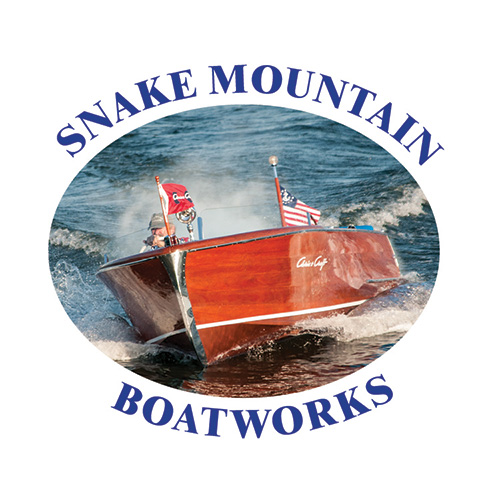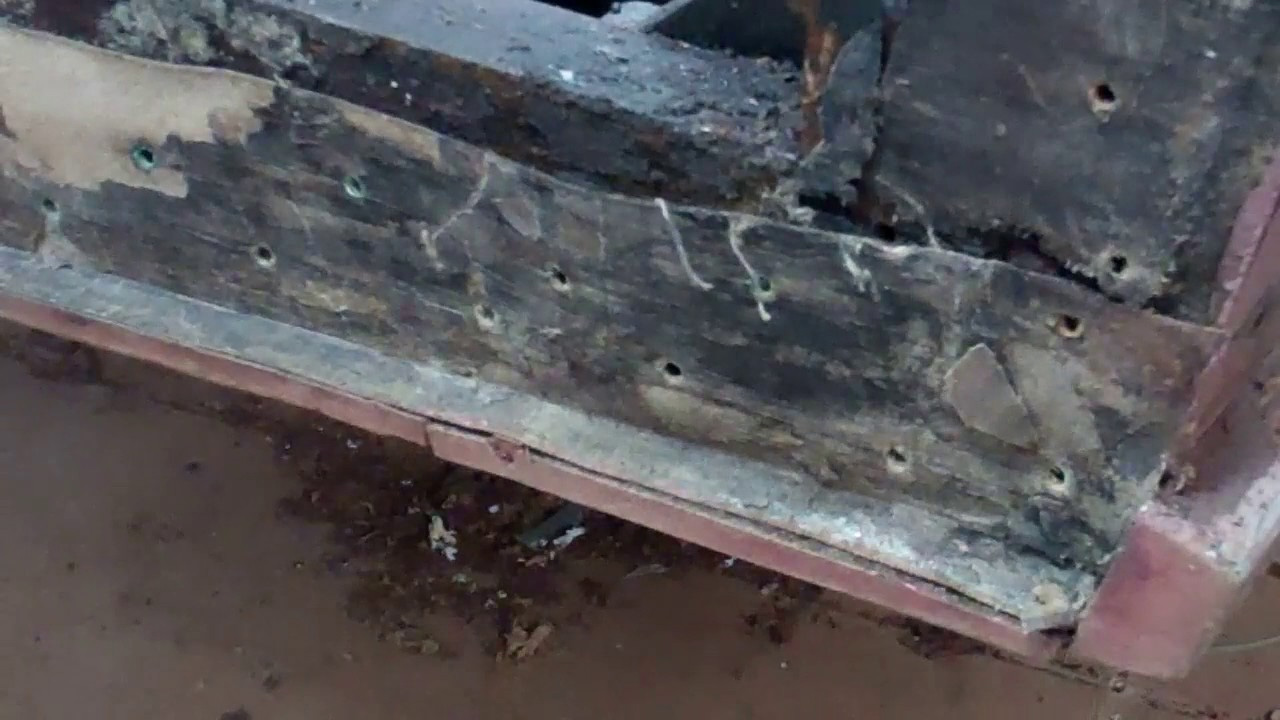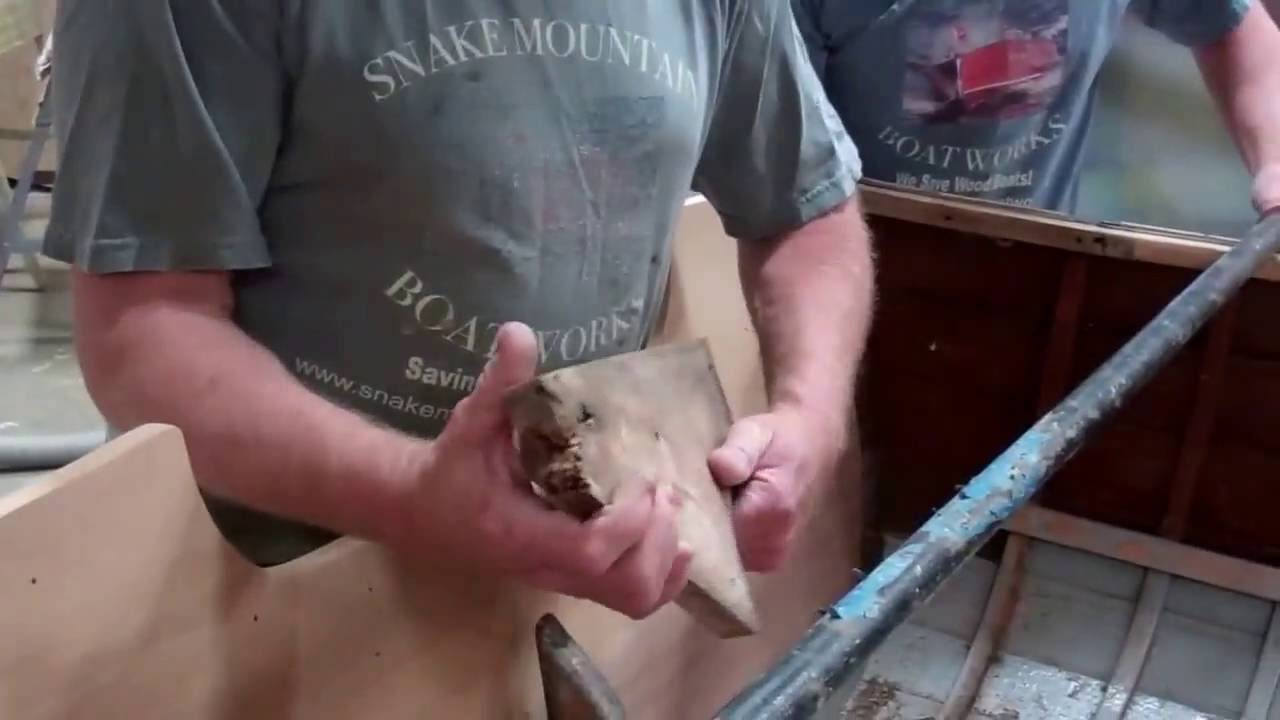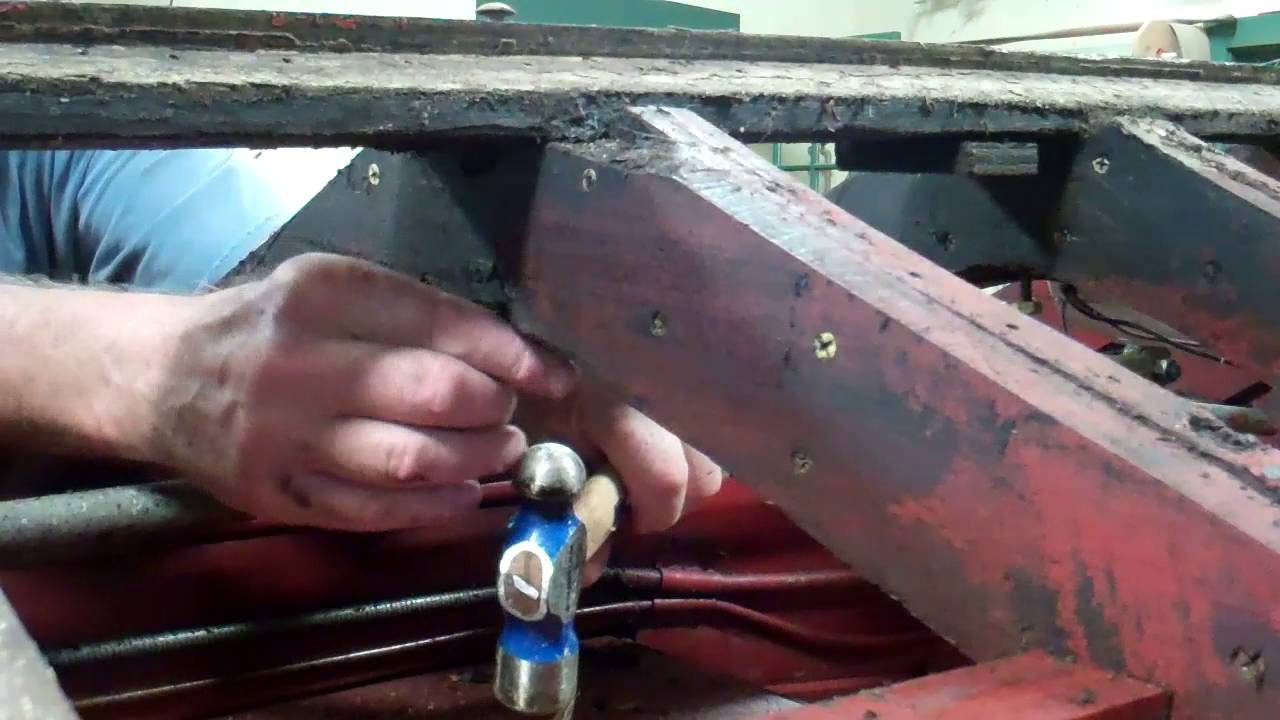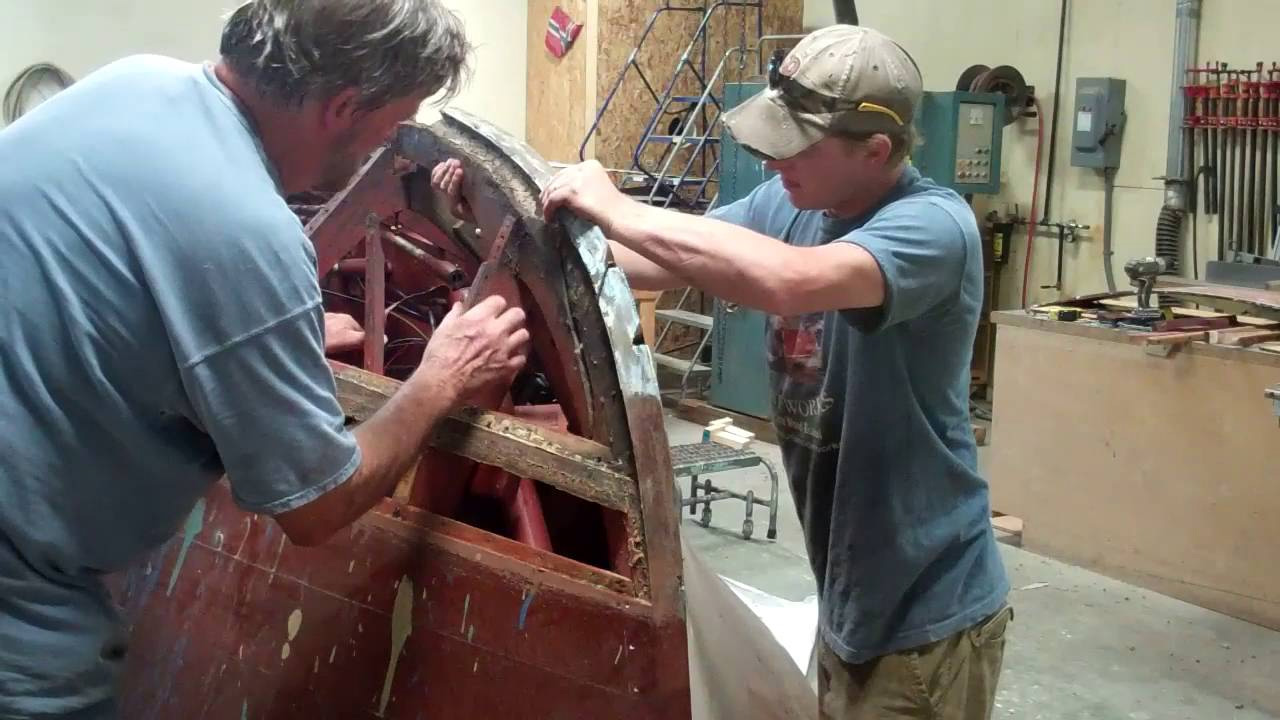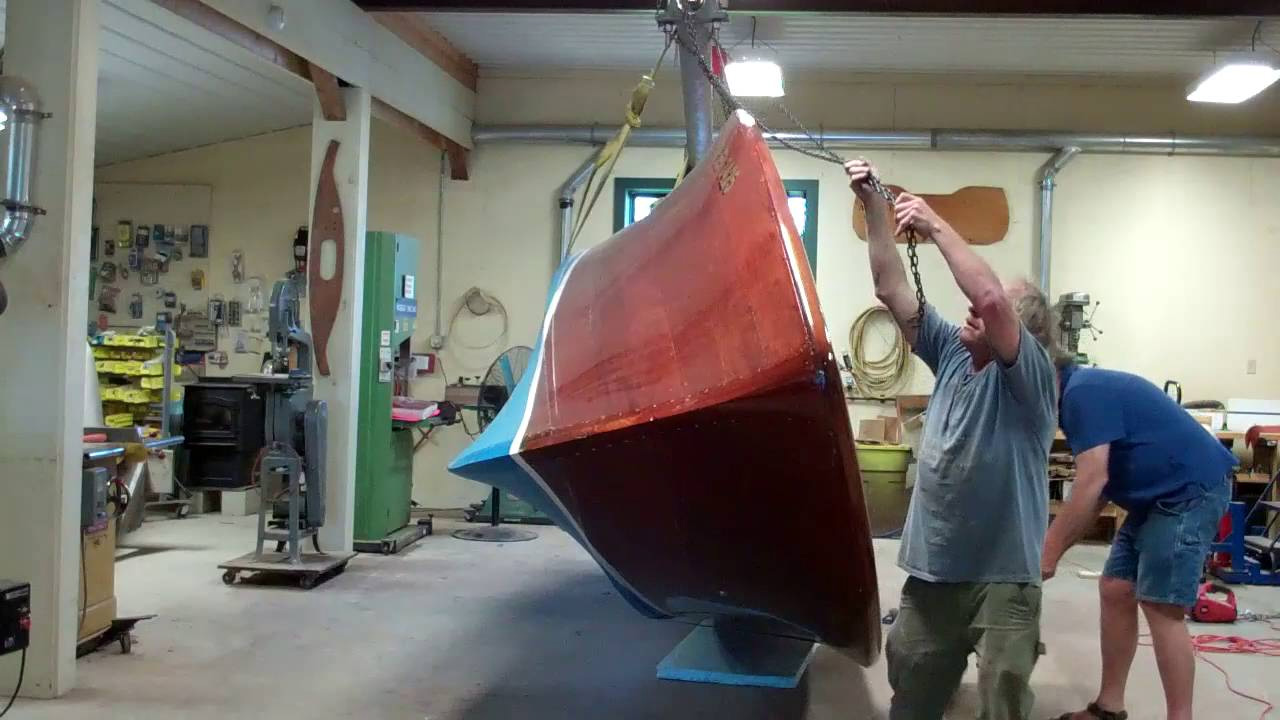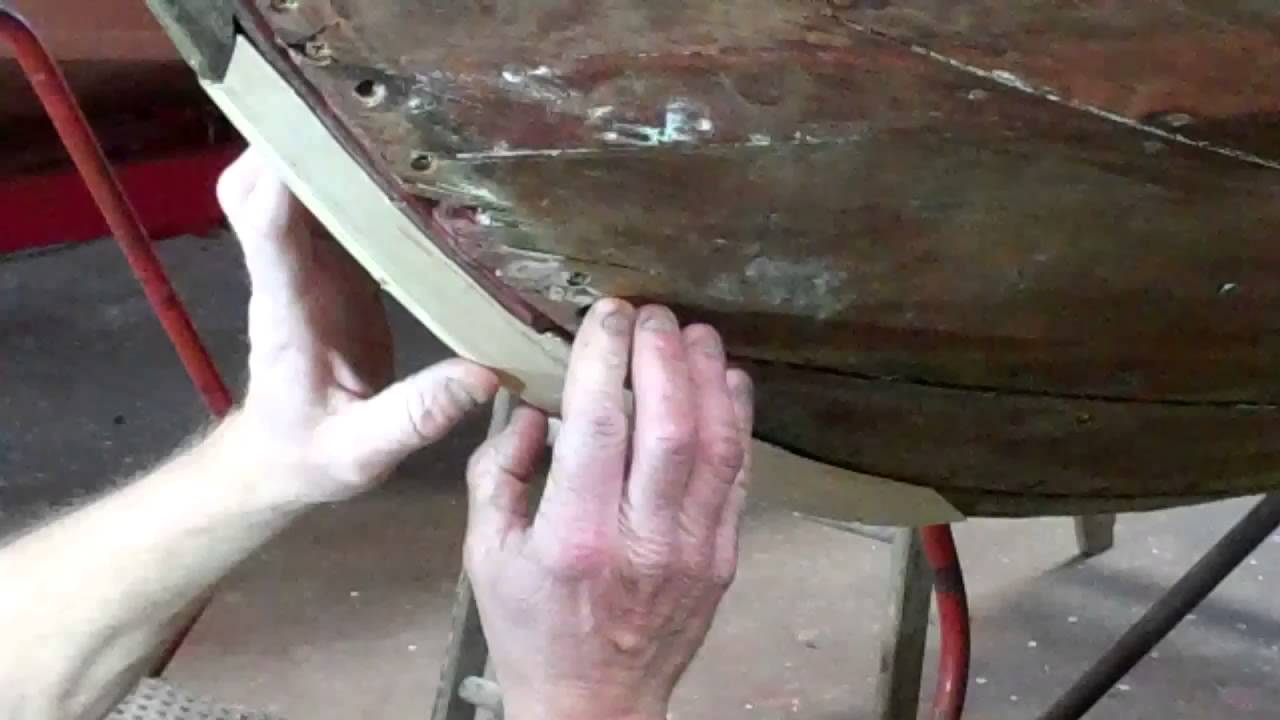By this time next week we should be fabricating and installing the inner layer of 1/8” Aquatek marine plywood to the bottom.
John will first fabricate an entire set of paper pattern sheets for each of the two surfaces and transfer them to the plywood. Once each component is cut and installed to test for fit, it will be removed and all sides will be sealed with Clear Penetrating Epoxy Sealer, followed by two coats of Sandusky Chris-Craft Red Mahogany bilge paint.
Then all three of us will work together applying mahogany 3M5200 to all ribs and other landings, followed by sinking thousands of silicon bronze screws.
The fun begins once the plywood is screwed down – cleaning the squeeze out, and there should be copious amounts of squeeze out, or you have not applied sufficient 3M5200.
The mahogany planks are next, and, while we will do our best to save the original planking, it is in pretty poor shape, which will force us to fabricate new planking using the originals as patterns.
But such considerations push us way ahead of where we are now, which is all about passing the bottom framing complete milestone!
